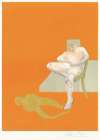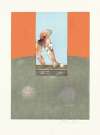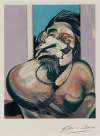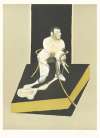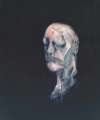Triptych
1986 - 1987
Francis Bacon’s prints after his 1986-7 Triptych Painting, are steeped in Bacon’s sense of his milieu. Inevitably, Bacon’s art is imbued with the turbulence that characterised the politics of his time. The prints’ titles—“Woodrow Wilson”, “Leon Trotsky” and “John Edwards”—alone convey Bacon’s explicit political concerns in this collection.
Francis Bacon Triptych 1986 - 1987 for sale
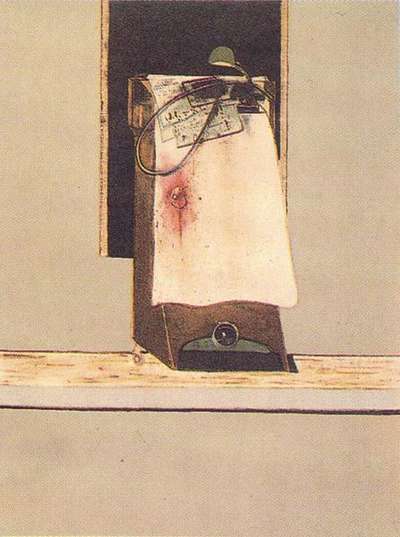
£3,550-£5,500Value Indicator
$7,000-$10,500 Value Indicator
$6,000-$9,500 Value Indicator
¥35,000-¥50,000 Value Indicator
€4,150-€6,500 Value Indicator
$35,000-$50,000 Value Indicator
¥670,000-¥1,040,000 Value Indicator
$4,550-$7,000 Value Indicator
TradingFloor
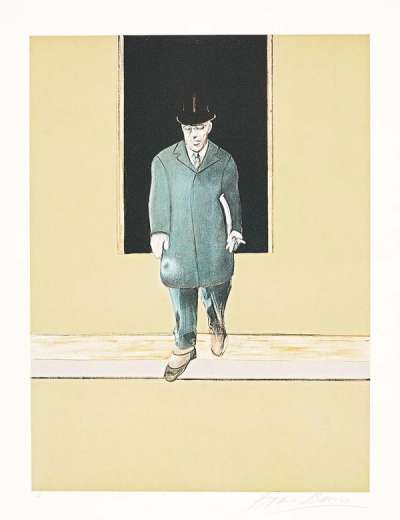
£9,000-£13,500Value Indicator
$17,000-$26,000 Value Indicator
$15,000-$23,000 Value Indicator
¥80,000-¥120,000 Value Indicator
€10,500-€16,000 Value Indicator
$90,000-$130,000 Value Indicator
¥1,710,000-¥2,570,000 Value Indicator
$11,500-$17,000 Value Indicator
TradingFloor
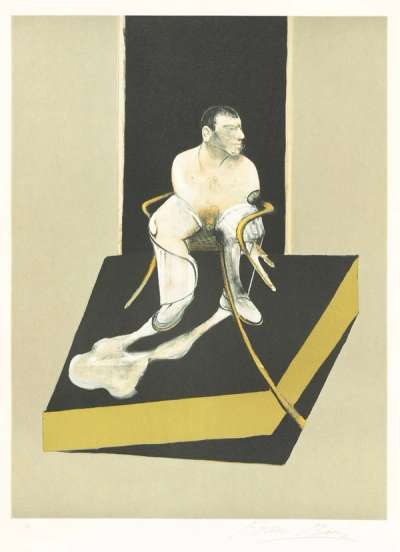
£8,500-£13,000Value Indicator
$16,000-$25,000 Value Indicator
$14,500-$22,000 Value Indicator
¥80,000-¥120,000 Value Indicator
€10,000-€15,000 Value Indicator
$80,000-$130,000 Value Indicator
¥1,610,000-¥2,460,000 Value Indicator
$11,000-$17,000 Value Indicator
Sell Your Art
with Us
with Us
Join Our Network of Collectors. Buy, Sell and Track Demand
Meaning & Analysis
Born in 1919, Francis Bacon’s life had spanned a large chunk of the 20th century – a period of recent history characterised by war, revolution, upheaval, and reform. In the Triptych 1986-7 collection, Bacon tackles the historical machinations of this period head on by way of a three-panelled painting of the same name. The left of the triptych, illuminated in all its glorious detail by the etching Triptych 1986-7 Woodrow Wilson (left panel), bears the image of American President Woodrow Wilson as he leaves the Palace of Versailles - site of negotiations for the Treaty of Versailles, which brought World War I to its end. Taking another historical event as its subject, the right panel of the painting, as visible in Triptych 1986-7 Leon Trotsky (right panel), is directly inspired by a widely reported photograph from 1940. This photograph depicts the study of Russian revolutionary Leon Trotsky shortly after his assassination by ice pick in Mexico.
The centre of the three-part image – visible in the print Triptych 1986-1987 John Edwards (centre panel) – depicts John Edwards, a companion and close confidante of Bacon’s. The most personal of the three images, it serves to place Bacon and Edwards’ relationship at the centre of a historical genealogy, and so elevate its importance. Having first met in Soho’s Colony Club in 1974, Bacon and Edwards went on to develop an almost father-son relationship. Upon Bacon’s death in 1992, Edwards became the executor of his estate, even inheriting the artist’s home and studio in the heart of London’s South Kensington. Deeply effected by Bacon’s passing, the Hackney-born Edwards later moved away from London, settling in Thailand in 1993.
Triptych 1986-7 is particularly significant given its 1988 exhibition in Moscow; one of the first works by a major Western artist to be shown in the USSR since its foundation in 1917, it imbues this collection with a further sense of being intimately linked to historical events. The exhibition, which featured Bacon’s work and had been organised by art dealer James Birch, was a huge success amongst Muscovites. Due to his ill health, Bacon himself was unable to attend the exhibition, but was eager to hear of its success. After all, Soviet art had been instrumental in his so-called ‘Screaming Popes’, of which Study After Velásquez’s Portrait Of Pope Innocent X (1953) is perhaps the most famous example: a source for the Pope’s iconic facial expression in this piece was the ‘Odessa steps’ scene from Soviet filmmaker Sergei Eisenstein’s iconic work, Battleship Potemkin (1925).
